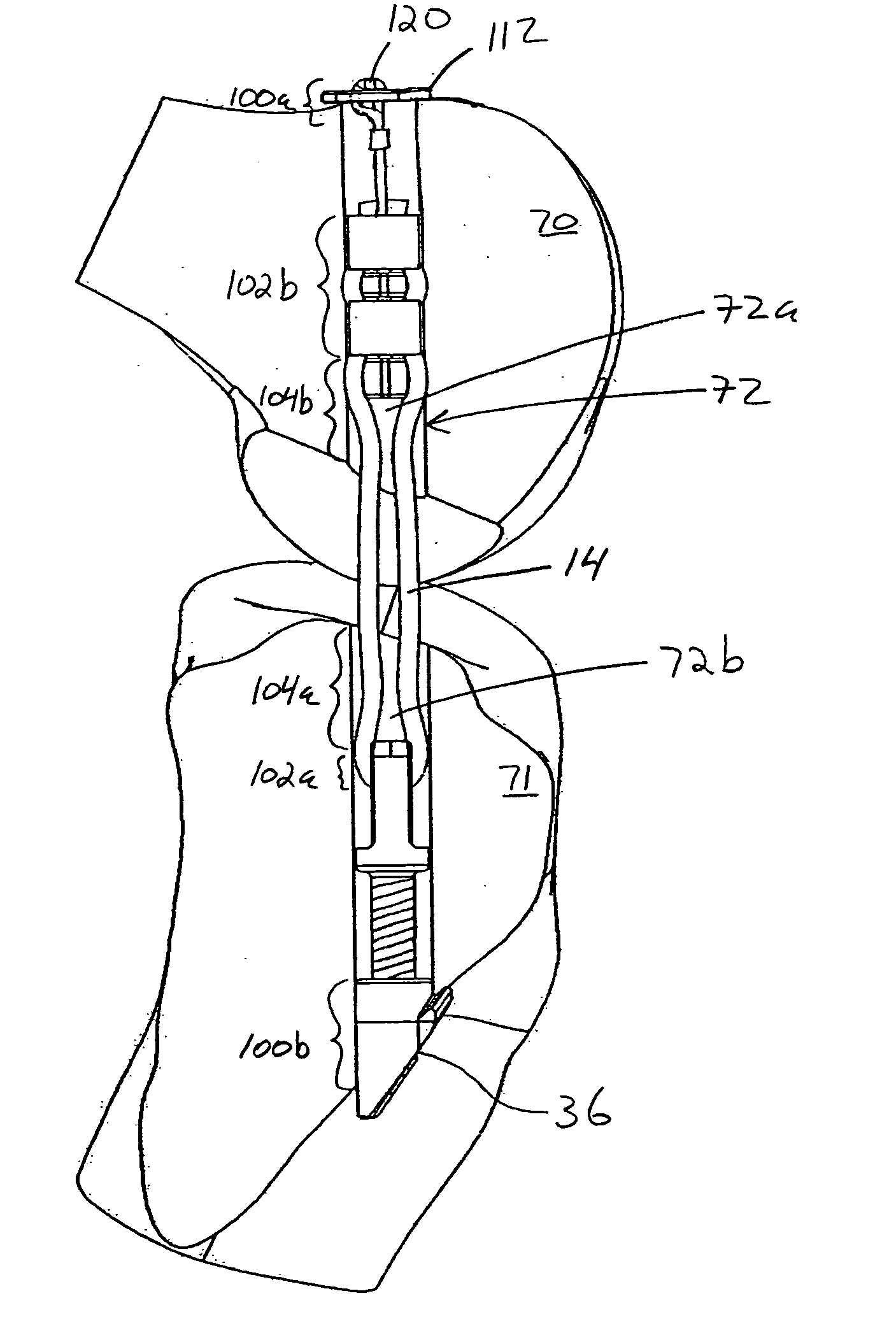Apparatus for assembling anterior cruciate ligament reconstruction system
a technology for assembling and repairing anterior cruciate ligaments, applied in the field of orthopaedic surgery, can solve the problems of poor healing effect, extensive morbidity, and further damage to menisci and articular cartilag
- Summary
- Abstract
- Description
- Claims
- Application Information
AI Technical Summary
Benefits of technology
Problems solved by technology
Method used
Image
Examples
first alternate embodiment
[0090] First Alternate Embodiment of Reconstruction System
[0091] FIGS. 14, 15A-15D, 16, 17A-17B and 18 illustrate a first alternate embodiment of the reconstruction system of the present invention, where the fixation of the graft using an opening for graft looping is on the tibial assembly, and the fixation of the graft using the compression ring and graft fixation surface is on the femoral assembly. This embodiment includes a femoral assembly 106 and a tibial assembly 108, with a graft 14 spanning therebetween, as best shown in FIG. 14.
[0092] Femur assembly 106 is best shown in FIGS. 15A-15D, and includes a bolt 110 and an anchor plate 112 (bone anchor) rotatably (pivotally) connected thereto. Bolt 110 includes a shaft 114, with a bolt head 116 and a flange 118 at one end thereof (which correspond to the bolt head 42, the flange 46 and the tissue / graft fixation surface described above). The other end of the shaft 114 terminates in an open (e.g. hook shaped) or a closed (e.g. a rin...
PUM
| Property | Measurement | Unit |
|---|---|---|
| Length | aaaaa | aaaaa |
| Force | aaaaa | aaaaa |
| Distance | aaaaa | aaaaa |
Abstract
Description
Claims
Application Information
 Login to View More
Login to View More - R&D
- Intellectual Property
- Life Sciences
- Materials
- Tech Scout
- Unparalleled Data Quality
- Higher Quality Content
- 60% Fewer Hallucinations
Browse by: Latest US Patents, China's latest patents, Technical Efficacy Thesaurus, Application Domain, Technology Topic, Popular Technical Reports.
© 2025 PatSnap. All rights reserved.Legal|Privacy policy|Modern Slavery Act Transparency Statement|Sitemap|About US| Contact US: help@patsnap.com



